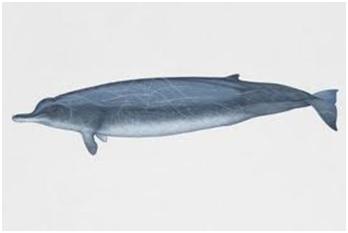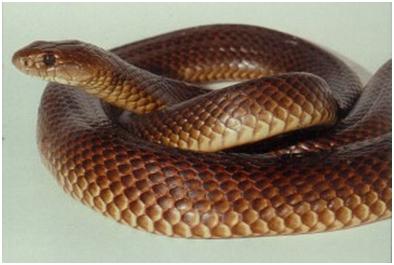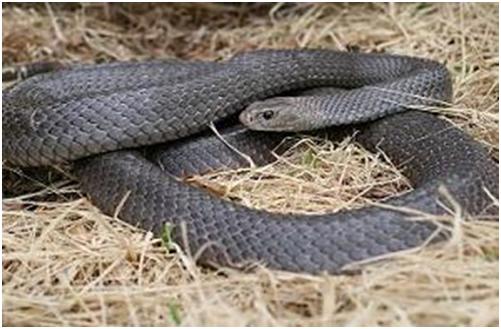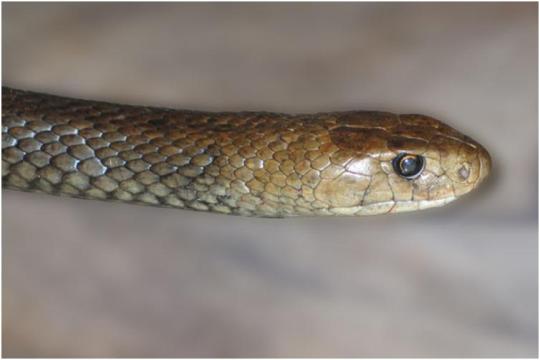RARE LONG BEAKED WHALE IN TASMANIA + KING BROWN SNAKE IN CANBERRA
Wildlife Carers Group received a call for a dead baby whale in Tasmania on 26/2/12, requesting it be removed from the beach.
After investigating the call, it appears that the baby whale turned out to be a very rare beaked whale that due to their long dive times and unobtrusive surfacing behaviour are difficult to sight.
These mammals are known as the deepest and longest diving of all cetaceans, because of the types of fish and squid recovered from their stomachs.
One quarter of the world’s 80 whales and dolphin species belong to the family of beaked whales (Ziphiidae).
2 species of beaked whales in the northern Bahamas are Mesoplodon densirostris and Ziphius cavirostris.
It appears that these beaked whales are effected by acoustics, that are disorientating them, causing the strandings and killing them, such as acoustic pollution in marine environments that include widespread oil and gas prospecting, ice-breaking, shipping noise and military sonar.
This discovery was made when four of the more than 5 beaked whales that were stranded in a limited area over a short period of time, naval sonar tests were being conducted in the northern Bahamas that suffered from acoustic trauma.
The US Navy is required to factor the welfare of sound-sensitive marine life into their sonar development.
Beaked Whales are most frequently sighted around deep canyons, gullies and walls, that rely on isolated critical habitats.

Densebeaked whale off Rarotonga, Cook Islands (WhaleResearch.Org) Ref: Whale Research.org.
Gray’s Beaked Whales, sometimes known as Haast’s beaked whale, the Scamperdown whale, or the southern beaked whale, mesoplodon grayi, have been found stranded in Australia with Gray describing approx 3 new species of beaked whale: Hector’s, the Strap-toothed and the Spade-toothed Beaked Whale.
Gray’s Beaked Whales have a circumpolar Southern Hemisphere distribution, occurring in cold temperate waters mainly between 30 and 45 degreesS, with a northern limit of about 25 degreesS. Sightings and strandings suggest that the species habitats the Indian Ocean, south and east of Madagascar, as well as off South America, the Falkland Islands, New Zealand and Western Australia. Stranded beaked whales have been found on southern Australian coasts. There is one record of this species from the Noerthern Hemisphere: a female stranded in the Netherlands. The animal is thought to have been an anomalous stray.
Sightings are rare, strandings in New Zealand and southern Australia occur mostly during the summer and autumn from December to April, suggesting there may be seasonal movement inshore to calve.
Gray’s Beaked Whales are dark bluish-grey dorsally and paler below. The beak and anterior part of the forehead are light grey or white. Adult females may be slightly lighter dorsally than adult males. The beak is long and cylindrical and the mouthline is straight. There is no noticeable bulge on the forehead, but the melon does bulge slightly just in front of the blowhole. In males, there is a single mandibular tooth positioned near the middle of each side of the jaw. In adult males, these teeth tilt forward slightly and are large and triangular; they may grow up to 10cm wide, although approximately 6cm wide is more common. There is also a row of 17-22 small, vestigial, teeth towards the rear of the upper jaw in adults of both sexes. These teeth are not attached to the bone, and in females, do not emerge from the gums. The dorsal fin is hooked and quite pointed.
The long white beak protrudes from the water as the animal surfaces to breathe. Gray’s Beaked Whale is known to breach and ‘porpoise’ when travelling fast at the surface.
Size range is 5.7m in length, and weigh 1.0-1.5 tonnes.

Gray’s Beaked Whale

Gray’s Beaked Whale
Photo reproduced with permission by DPIPWE (Copyright).
The stranded dead Beaked Whale reported to Wildlife Carers Group in Tasmania is a female sub adult, not quite fully grown (4.8m total length) Gray’s Beaked Whale, found at Teatree Lane in East Devonport, as shown in the photo above.
This Gray’s beaked whale is the 6th specimen that the Dept of Primary Industries, Parks, Water and Environment (DPIPWE) have seen on Tasmanian beaches in the last decade.
The wildlife officers took samples of the dead whale, and sent her to Hobart, which they received 27/2/12, but it appears that they were unable to test for acoustic trauma, and unfortunately could not determine a cause of death.
The 2nd photo the department sent Nora is showing signs of being a badly battered whale on the sand, therefore the photo won’t be displayed, however the photo does resemble the picture of the Gray’s beaked whale as shown above, directly before the East Devonport pictured Whale.
Classification – Species: grayi; Genus: Mesoplodon; Family: Ziphidae; Suborder: Odontoceti; Order: Cetacea; Class: Mammalia; Phylum: Chordata; Kingdom: Animalia.
Arnoux’s Beaked Whale, aka Arnux’s beaked whales, southern four-toothed whales, southern beaked whales, New Zealand beaked whales, southern giant bottlenose whales, and southern porpoise whales Berardius arnuxii are a rare cetacean species, slate grey to brown dorsally and lighter ventrally. The head may also be slightly lighter. Both males and females have two pairs of teeth at the tip of the lower jaw. The anterior, or front pair are large and triangular, while the posterior pair are smaller and peg-like. The anterior pair of teeth is exposed when the mouth is closed. Animals are often heavily scarred with parallel linear tooth-rakes. They are the largest beaked whales in the Southern Hemisphere. The body is spindle-shaped. The dorsal fin is small, triangular, slightly hooked and positioned well back on the body. The flippers are short and have rounded tips. The beak is long and tubular, distinct from the forehead, and may have a horizontal crease above the gape. The head is small, with a steep forehead and the melon is pronounced and rounded. Their large body size, steep melon and long beak, 2 pairs of erupted teeth in the lower jaw distinguish Arnoux’s Beaked Whale from other Southern Hemisphere beaked whales.

Arnoux’s Beaked Whales
 Arnoux’s Beaked Whale
Arnoux’s Beaked Whale
Size range is 9-10m long at adulthood, and weighing 9 tonnes, 4m long at birth.
This species has been found stranded in Tasmania.
Classification – Species: amuxii; Genus: Berardius; Suborder: Odontoceti; Order: Cetacea; Subclass: Euheria; Cass: Mammalia; Subphylum: Vertebrata; Phylum: Chordata; Kingdom: Animalia. Refs: Australian Museum, cms.int, wildlifeextra.com, itsnature.org, stuff.co.nz, namibian.org, marinebio, (DPIPWE – Wildlife Biologist, Marine Mammal Conservation Program, Biodiversity Conservation Branch, Hobart, Tasmania).
KING BROWN SNAKE, Mulga Snake, or Pilbara Cobra, Pseudechis australis
Wildlife Cares Group received a call about a King Brown Snake in Latham.
The male caller was concerned about this snake being a King Brown, since it struck at his window, showing aggressive signs, and the colour was a bit different to an Eastern Grey.
The snake moved into the drain at his property, and didn’t want to leave.
King Brown Snakes are a highly venomous snake, and are a member of the Black Snake family, and not the Brown Snakes, therefore when bitten by a King Brown, you will need the antivenin of a black snake.

King Browns appear to habitat all arid areas of Australia, as shown in the shade of green on the map of Australia above, and has a strongly defined dark crosshatched pattern on its scales.

King Browns don’t normally reach the ACT.

The colour can vary depending on where the snake is found with various tones of black, grey, dark green, and dark reddish brown. Usually each scale is lighter toned around the edge and often gives the snake a reticulated appearance. One of the scale characteristics is that the caudal scale are normally both single and divided.
There is a scalation difference between the brown and black snakes on the head, the brown snakes of the genus Pseudonaja have a single temproal scale and the black snakes of the genus Pseudechis have two temporal scales.
The size can also vary depending on where they come from, seeming to be a larger size further north with the occasional specimen reaching close to 10 foot in total length.
King Browns will become aggressive when provoked, will flatten out their neck and try to bite, so leave them alone.
The King Brown shelters in burrows, logs, rock piles, etc. Prey consists of small mammals, birds, snakes, lizards and frogs.
King Browns are often found active just on dusk, but will hibernate when it is too hot, with mating around late spring and lay an average of nine eggs.

Red-bellied Black Snake Pseudechis porphyriacus

Red-bellied Black Snake
Refs: pilbarapythons.com, fortunecity.com, wikipedia.
After the first attempt of Wildlife Carers Group snake handler arriving on the scene to remove the snake, unfortunately the snake could not be seen, so she visited someone close by, when the caller phoned back.
Our snake handler returned, found the snake on his lawn, and removed and released the snake at the nearest reserve.
Nora Preston, Wildlife Carers Group Founding President, advised that if the snake was a King Brown, it could not be released.
Wildlife Carers Group snake expert and handler identified the snake to be an Eastern Brown Snake Pseudonaja textilis that is part of the Brown Snake family.
 Eastern Brown Snake
Eastern Brown Snake

Eastern Brown Snake – Belly

Eastern Brown Snake-head

Eastern Brown Snake-juveniles showing different colour variations at different ages

Adult Eastern Brown Snakes showing colour variations.
The Common or Eastern Brown Snake is active mostly by day, has been seen active on hot nights, exept in very hot weather and in the cold Winter months when they go into hibernation. It feeds on rats, mice, birds, lizards and other snakes. The brown snake lays from 10 to 35 eggs. The young brown snakes are banded in dark grey or black, and have a broad band on the back of their heads. By three years of age, the bands disappear, and the adult is usually uniform in colour, ranging through light or dark brown, orange-yellow or even black. The shape is streamlined, and the head is not distinct.
The Eastern Brown Snake winds its body into an ‘S’ shape when attacking, raising itself off the ground. It strikes very rapidly, with its mouth open, possibly because of its relatively small fangs that are approximately 3mm in length.
The average venom yield is around 4mg, although the record venom yield was 67mg. The venom contains potent neurotoxins and procoagulants, resulting in progressive paralysis and incoagulable blood. Clotting defects may require multiple doses of anitvenom for complete reversal. Occasional fatalities have occurred as a result of bleeding into the brain due to coagulation distrubances. Ref: AVRU.
For further information on snakes, identification, tips, first aid please click on this link: https://wildlifecarersgroup.wordpress.com/2011/08/04/snakes-information-identification-tips-first-aid-notes-for-wes-4-8-july-2011/
WILDLIFE CARERS GROUP WOULD LIKE TO THANK YOU FOR ALL YOUR SUPPORT IN 2011.
WISHING YOU A VERY SAFE AND HAPPY YEAR FOR 2012.
There can be no discrimination against our native wildlife, all native wildlife are precious to our Eco system, in assisting to maintain a healthy well balanced Eco system, and will be protected, and rehabilitated equally.
Wildlife Carers Group, the only local wildlife group with long term expertise and knowledge in our native wildlife, that will act on, and investigate animal cruelty/welfare/rights, and, as a community group, that also cares about our community, and the rights of our community groups.
Wildlife Carers Group, the only local wildlife group helping to keep our state and country out of deficit, with no government funding, run solely by volunteers, that is keeping you in a job.
Wildlife Carers Group, the only local wildlife group that trains work experience students.
NORA PRESTON (began rehabilitating wildlife in the early ’80′s.)
Founding President
WCG – WILDLIFE CARERS GROUP INC. – Founded in 2004.
PO Box 3509
WESTON CREEK ACT 2611
Mob: 0406 056 099
Email: wildlife_carers_group@yahoo.com.au
Website: http://wcg.awardspace.com
https://wildlifecarersgroup.wordpress.com/?sn=l
http://www.myspace.com/wcginc Check out http://www.myspace.com/wcginc and become a friend.
We are also on Facebook, http://www.facebook.com/profile.php?id=1649024860&v=info
with photos included on the site, and become a friend.
You can now follow us and join us on Twitter http://twitter.com/wildlifecarersg/ , http://canberra.climatexchange.org.au/wildlife-carers-group
28 February 2012
Support WCG. WCG is an independent, non profit, non government community based charity providing animal/wildlife care, rescue/rehabilitation and is also an animal/wildlife welfare group, providing protection for our wildlife/animals, run solely by volunteers, with no government funding, saving taxpayers money. WCG relies on donations from the public in order to carry out its work. If you would like to make a donation to WCG, please send a cheque/money order made payable to Wildlife Carers Group Inc. To PO Box 3509 , Weston Creek. ACT. 2611. AUSTRALIA . Or contact us by email wildlife_carers_group@yahoo.com.au
or mobile: 0406 056 099 to discuss other alternatives. Thank you for all your support.
Aims and Objectives: To promote the general welfare and continued survival of native fauna and flora as an essential element of the environment, and specifically to undertake the specialised care necessary for the rehabilitation of orphaned, sick and injured native birds and other animals, to promote public awareness of the need to conserve existing wildlife species, and an understanding of their particular habitat and feeding requirements.
Support WCG. Become a WCG MEMBER, VOLUNTEER, WILDLIFE CARER, download the m/ship form from http://wcg.awardspace.com and join up. Thank you for all your support.
To see Wildlife Carers Group report and review of the documentary ‘Kangaroo Mob’ please click on these links:
Published in theTasmanian Times please click on this link: http://tasmaniantimes.com/index.php?/pr-article/wildlife-carers-group-attends-premiere-screening-/
To view the amendments and Draft ACT Pest Animal Management Strategy 2011-2021 please click or copy and paste this link into your browser: AMENDMENTS DARTING CURRAWONGS RSPCA – DRAFT ACT PEST ANIMAL MANAGEMENT STRATEGY 2011-2021 « wildlifecarersgroup
To see Wildlife Carers Group full 5-day report, of the training with the work experience student, Wildlife Carers Group Kangaroo Meat Testing, results: contaminated, etc Please click on this link https://wildlifecarersgroup.wordpress.com/2011/08/04/wildlife-carers-group-wcg-visit-to-callum-brae-nature-reserve-etc-full-5-day-work-experience-student-wes-placement-report-trained-by-wcg-founding-president-nora-preston-4-8-july-2011/?sn=l .
To see Wildlife Carers Group Kangaroo Meat Testing, click on this link: https://wildlifecarersgroup.wordpress.com/2011/09/04/wildlife-carers-group-kangaroo-meat-testing-%e2%80%93-5-day-work-experience-student-4-8-july-2011/?sn=l
‘KANGAROOS AND DISEASES’, https://wildlifecarersgroup.wordpress.com/2011/08/04/kangaroos-and-diseases-notes-for-5-day-wes-4-8-july-2011/?sn=l
This species maintains a healthy, well balanced eco system.
You can help us make the necessary changes for our native protected Eastern Grey
Kangaroos, by signing this petition, and circulating this for us www.gopetition.com/petitions/save–all–the-kangaroos.html .
In this article, interviewed on 15/4/10, www.nowuc.com.au/2010/05/27/kangaroo-plan…/comment-page-1/
don fletcher from tams says thatkangaroos are not the main problem and in fact‘native grasses’ are not threatened with extinction, but other animals and plants are, and that “the biggest ‘contributor’ to the loss of the natural treeless grasslands of our region has been agriculture (by far)”.
This statement is admitting to the flawed, dishonest kangaroo management plan, and russell watkinson’s media release, on Friday 18/6/10, that blames the kangaroos for driving legless lizards, earless dragons, etc, and the deteriorating grasslands and woodlands to extinction, by eating all the grasses, when fletcher admits that the native grasses are not threatened by the kangaroos, but by human activity, including toxic sprays.
Please check out this link: http://www.canberratimes.com.au/news/local/news/general/roo-best-custodian-for-some-plants/1652005.aspx
that was in the Canberra times on 17/10/09, that completely refutes the allegations against the roos destroying grasslands, that was sent to maxine cooper, that were also ignored.
The report is by Julie Lindner, who has also been studying the grasslands and the roos for the past 20 years, which backs up what I’ve been saying all along.
http://www.canberratimes.com.au/news/local/news/general/roo-best-custodian-for-some-plants/1652005.aspx, with a more recent article in the Chronicle in the ‘letters to the editor’ section, titled ‘culling controversy’ p.23, 14/6/11.
Please click on this link: www.youtube.com/watch?v=JUZrKj6ClBg
‘KANGAROO CHILLER BOX INVESTIGATION’/’KANGAROOS ON TRACK TO EXTINCTION’, that contains the cruel bashing to death of roos that are shot, but not directly killed, hung up while still alive, and left suffering, trembling as they hang, tortured to death, and joeys bashed to death, possibly attempting to decapitate the joeys head on the back of the truck with several blows.
Please click on this link: http://www.youtube.com/watch?v=zbn3c8EcNRk&feature=related
SEE the so called controlled government butchering, you will note that the kangaroos are still alive when hung up, suffering, AND BEING TORTURED TO DEATH, the male is laughing at the cruelty he has just inflicted on this kangaroo, a joey stomped to death, even the child stomps on it as he walks past following his father, orphaned joeys hopping around, left to starve to death, a joey bashed till its eyes popped out, but is still alive, suffering, a prolonged death, and the male admitting that these are protected species. Native protected animals called pests, the very same native animals that maintain a healthy well balanced eco system. The code of practice that the shooter refers to is inhumane, and unacceptable, as witnessed in this video footage. Kangaroos are not fit for human or dog consumption, heavily contaminated with various diseases/harmful bacterias, e.coli, salmonella, staphylococcus, streptococcus, toxoplasmosis, preserved illegally with sulphur dioxide that causes thiamine deficiency, (a white crystalline solid forming part of the vitamin B complex, C12H17CIN4OS; a vitamin (B1), required by the nervous system, absence of which causes beri-beri and other disorders), causing death, intake of pesticide spraying to control locusts, etc. Keep watching till it stops, keep an eye on the timer, next to the speaker symbol, length 10:59.
There are more links on youtube to show the facts on the extreme cruelty committed to our native protected macropods.
Possum abattoir
http://www.engagemedia.org/Members/HuonEnviroCentre/videos/possumdeath.wmv/view,
Possum Abattoir – Lenah Game Meats, Tasmania — EngageMedia
These animals are still alive and awake, when going through the abattoir’s chute processing system, dropped on top of one another, through a swinging door, to go through to the next phase, with several possums piled on top of one another, into the same boxes, when delivered to the abattoir, (possums are extremely territorial,) females with joeys, butchered, and bashed to death. Please Help stop these extreme acts of animal cruelty and export. You can help stop these extreme acts of animal cruelty to these possums by adding the above link to the possum abattoir and lodging your submissions by 23/4/10, to wta@environment.gov.au
wildlife.enq@dpipwe.tas.gov.au
and click on link http://www.environment.gov.au/biodiversity/trade-use/invitecomment/brushtail-possum.html
Submissions are now closed. This species maintains a healthy well balanced eco system.
To see the full report on Wildlife Carers Group possum rescue, possum boxes and investigating dog neglect, please click on this link: https://wildlifecarersgroup.wordpress.com/2012/02/19/wildlife-carers-group-possum-rescue-and-investigating-dog-crueltyneglect-reported-to-us-19212/
Dingoes
Following Wildlife Carers Group Investigation and Report on the Fraser Island Dingoes, on 29/8/11, on 5/9/11, the Liberal National Party (LNP) has committed to ensuring the long term survival of the Fraser Island Dingoes, click this link to read the LNP’s commitments: http://www.lnp.org.au/policies/queenslands-precious-wildlife-the-fraser-island-dingo .
Please click this link to view Wildlife Carers Group follow up on Fraser Island Dingoes Driven to Extinction Report: https://wildlifecarersgroup.wordpress.com/2011/08/29/fraser-island-dingoes-driven-to-extinction/?sn=l , https://wildlifecarersgroup.wordpress.com/2011/09/06/wildlife-carers-group-investigation-and-report-on-the-fraser-island-dingoes-qld-liberal-national-party-takes-action-to-protect-fraser-island-dingoes/?sn=l
Terminating the rangers from their jobs, who are responsible for the inhumane treatment of dingoes on Fraser Island , http://www.youtube.com/watch?v=xSSaknF6Wnw&feature=youtu.be
, who are starving them to death, mismanaging them, mistreating them, will prevent driving these spectacular native wildlife species to extinction, and help end acts of animal cruelty. Changing the Qld government legislation and constitution, to humanely conserve this species, and their habitat. Erecting GIVE WAY to DINGOES/WILDLIFE Signs. We can see their marine life up and down the Qld coast, however, the only unique sighting that Fraser Island can boast about, and can offer to the tourists, is the pure breed native Dingoes, once the last 90 odd Dingoes, population estimation as of 28-29 August 2011, (since the mismanaged Fraser Island fire by the Qld government, this Dingo population has more than likely dropped dramatically), that are left on the Island are driven to extinction, through arrogance, mismanagement and mistreatment, Fraser Island will have nothing left to offer to the huge tourist trade it currently holds, which will end Fraser Island tourism. This species maintains a healthy well balanced eco system.
To read Wildlife Carers Group report on WILDLIFE CARERS GROUP VISIT TO TASMANIA in the Tasmanian Times, please click on this link, http://tasmaniantimes.com/index.php?/pr-article/wildlife-carers-group-visit-to-tasmania/
Wildlife Carers Group report on our visit to Tasmania can be seen on this link:
https://wildlifecarersgroup.wordpress.com/2012/01/02/wildlife-carers-group-visit-to-tasmania-wildlife-being-driven-to-extinction-wildlife-care-2112/
To read Wildlife Carers Group report on Tortoise cruelty and removing the fish hook, and in the Tasmanian Times please click on this link:
Wildlife Carers Group report on Tortoise cruelty was published in the Tasmanian Times, to read it please click on this link: http://tasmaniantimes.com/index.php?/pr-article/cruelty-to-a-long-necked-tortoise/
Disclaimer: WCG and the author do not assume or accept any responsibility and shall not be liable for the accuracy or appropriate application of the information contained in this letter/email.



Leave a comment